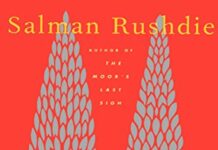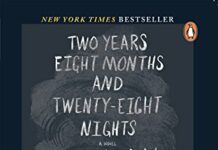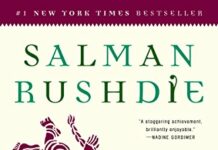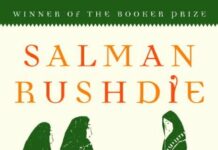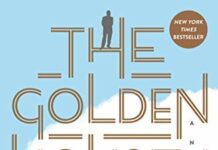
Ebook Info
- Published: 2008
- Number of pages: 280 pages
- Format: EPUB
- File Size: 1.82 MB
- Authors: Salman Rushdie
Description
An astounding, intense novel by the Booker-prize winning author of Midnight’s Children.In the summer of 2000 New York is a city living at breakneck speed in an age of unprecedented decadence. Into this tumultuous city arrives Malik Solanka. His life has been a sequence of exits. He has left in his wake his country, family, not one but two wives, and now a child. But as his latest marriage disintegrates and the fury builds within him he fears he will become dangerous to those he loves. And so he steps out of his life once again and begins a new one in New York.But New York is a city boiling with fury. Around Malik cab drivers spout obscenities, a serial killer is murdering women with a lump of concrete, and the petty spats and bone-deep resentments of the metropolis threaten to engulf him, as his own thoughts, emotions and desires reach breaking point.‘Both a howl of rage and a love letter… Rushdie is a very great novelist – our greatest’ Guardian
User’s Reviews
Reviews from Amazon users which were colected at the time this book was published on the website:
⭐This novel consists of the thoughts, impressions, and actions of one Professor Malik Solanka, rich and marginally famous from his invention and marketing of the Little Brain dolls, recent émigré to New York, a middle-aged man fleeing his past life and loves and trapped in an internal argument with his own emotions, living with alcohol and gaps in his memory.And for the first ninety pages of this book, this portrait of the Professor and his observations about the various ills of the American culture is all we get. There is no action. There is little explication of his earlier life. There are a large number of very facile remarks about the culture, the economy, the generation gap, political non-competence, about the true rulers of the world. And we are treated to the first cornerstone of Rushdie’s theme, Solanka’s uncontrolled personal fury, striking out at himself and innocent by-standers.If this was all there was to the book, yet another look at a marginally psychotic, conflicted individual, it really wouldn’t have been worth reading. Rushdie is too good a writer to fall into that trap, however, and having gotten in his licks at the American culture as he sees it, the real story can now begin. Starting with a rather unusual affair with the queen of a group gen-Xers, we are treated to an exploration of the mental effects of incest and gather some additional insight into the items that helped formed Solanka’s character and his current problems. Unfortunately, incest is treated here as an absolute evil, with no exploration of alternative cultural modalities and relative levels of sin, things which would have improved the point of this section. As an outgrowth of this affair, the Professor is inspired to start a new project, and interactive web-based science fiction story.As a story-within-a-story, this is no better than grade B pulp from the fifties. As an allegory for later events in the book and as another model for his theme, it serves a significant purpose, and it is quite believable that such a story would become immensely popular, putting the Professor back in the limelight and in contact with people from his earlier life. Here we finally get to look at the whole man, and even if it is not a very pretty picture, it is at least comprehensible.The last section of the book is yet another level of allegory, forcefully stating in yet one more way Rushdie’s theme of fury being the driving force behind creativity, murder, heroes and cowards, world domination and the battle of the sexes.Rushdie peppers his prose with multiple literary, personality, and event references. While most of the time such references add to the content and ambience of the story, there are places here where I felt it was overdone, to where I felt that Rushdie was showing off, rather than trying to advance or add to the story. Characterization for anyone except Solanka is very sketchy, and occasionally there are characters introduced, given a fair amount of development space, and then effectively dropped from the story.The various levels of story and allegory bounce against each other, giving more depth to this book than would otherwise have been present, but at the same time I found most of it too obvious, on par with Rushdie’s too easy observations and criticisms of American culture, with a net feeling of skating on a lake, thinking the ice is all there is, when the real depth is there below your feet, if you could just get to it. As it is, this story’s potential excellence remains locked below the ice, and we are left with the mild entertainment of skating in circles and figure-eights.
⭐Why are people in the prosperous, constantly stimulating, world of material plentitude and endless opportunities that is America in the late 1990’s so filled with fury? What happens to artistry in a world of global communications? What happens when a character you’ve created becomes commodified, commercialized, watered down, and transmogrified into a global icon you hate?In 259 pages of energetic, sometimes frenetic and breathtaking prose, Rushdie explores these and other questions as he tells us the story of Malik Solanka, an ex-professor turned television scriptwriter who has somewhere along the line turned into a very angry man. He was never a particularly even-tempered fellow–one of his friends reminds him that he once threw someone out of his house for misquoting Philip Larkin–but now his constant, gnawing, soul-sapping fury has driven him to the point where he fears he will become violent. When we first meet Solanka, he has already fled from his family in England to America, fearing for their safety if he stays. America, however, does not prove much of a solution, as he is constantly provoked by the loudness, by American mannerisms, by American culture. Watching TV news coverage of the Elian Gonzalez story is enough to make the red ball of anger in him rise again, as does the American “cultural hypersensitivity, this almost pathological fear of giving offense,” as does the cultural inauthenticity of a pseudo-Viennese Kaffeehaus where the counter staff doesn’t even recognize the word “Linzertorte.”This novel has passages of linguistic gymnastics and cultural play worthy of the best of Rushdie, and I would certainly recommend reading it. The verbal fun and the acuity of Rushdie’s vision of America is dead-on in so many places, and you will find yourself laughing and nodding in recognition as he describes people having loud cell phone discussions about very personal topics in public places, for example, and his riffs on everything from literary academic stars to advertising culture. The doll he created, Little Brain, is also terrific, at least in her original incarnation: Solanka’s idea was that she should be sassy time-traveler who would interview the great thinkers of the past. You got to love a woman who gives Galileo flak.Although there are many reasons to read and love this book, this novel is not quite a first-tier Rushdie. It is surprisingly plot-heavy for such a short book, and some of its sub-plots are a bit hackneyed. Murders of the rich and beautiful, TWO cases of incest, a third-world coup by a megalomaniac leader–while Rushdie gets some good material out of these plot threads, these stories don’t have the energy that usually permeates every nook and cranny of a Rushdie novel. I also have some reservations about the conclusion. What exactly has Solanka learned over the course of his adventures, and how is this embodied in his final actions? This ending is far more equivocal and, I think, despairing than those of many of Rushdie’s fictions.While this is not the best novel Rushdie has ever written, it is nonetheless decidedly worth reading. Read it for its (as always) interesting protagonist and its raw, witty insights into life in contemporary America. This is Rushdie’s _The Way We Live Now_.
⭐Five stars simply because it’s Rushdie. But the paperback copy I received (A Modern Library International Edition) is only 7 inches tall, with lower-case text less than 1/6 inch tall. A REAL STRAIN TO READ! What, were they scrimping on paper?
⭐I only just read FURY for the first time, and my tardiness finds Salman Rushdie’s book now embedded in a post 9/11 English speaking world that is at “war” against terrorism, with the author being lately knighted, provoking a renewed fatwa on his life. I can’t help thinking that reading FURY at this time led me to a different perspective from those reading it upon its publication in 2001.Many others have pointed out that FURY is not Salman Rushdie’s finest work, but it is still a fabulous read. I found it to be intelligent and moving, if at times unnecessarily difficult. This group of Rushdie’s characters seems completely modern yet with a timeless feel. Rushdie’s plot once again revolves around alter-realities; sometimes cultural, but mostly psychological, and I found the doll trope particularly attractive.If you’ve read Rushdie I highly recommend FURY, if not, begin with MIDNIGHT”S CHILDREN or the incomparable SATANIC VERSES.
⭐Who is this man? Where has he come from? Why is he treated as everyone else? Where did his pretty wife go and was he responsible for Frieda Pinto’s fashion shoot? All this and more needs to be answered before I study one of his books out of chronological order after he has bared all on YouTube and risked a geek’s exterior for what he accomplished with 1 literary critical book of his own.
⭐Exceptional read
⭐Salman Rushdie nov is about how every person has a Fury within and how it affects his/ her thoughts and where it leads to
⭐Hard work to begin with – but worth it!A slight departure from what I usually read, but thoroughly enjoyed it!
⭐All are quality products.Thank you!
Keywords
Free Download Fury in EPUB format
Fury EPUB Free Download
Download Fury 2008 EPUB Free
Fury 2008 EPUB Free Download
Download Fury EPUB
Free Download Ebook Fury
